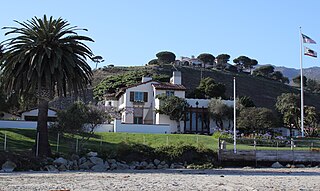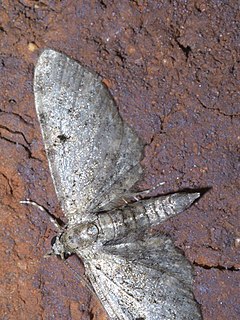Related Research Articles

Rindge is a town in Cheshire County, New Hampshire, United States. The population was 6,014 at the 2010 census, and an estimated 6,273 in 2018. Rindge is home to Franklin Pierce University, the Cathedral of the Pines, and part of Annett State Forest.

Aconcagua is a mountain in the Principal Cordillera of the Andes mountain range, in Mendoza Province, Argentina. It is the highest mountain outside of Asia, being the highest in both the Southern and Western Hemispheres with a summit elevation of 6,960.8 metres (22,837 ft). It lies 112 km (70 mi) northwest of provincial capital, the city of Mendoza, about five km (3.1 mi) from San Juan Province, and 15 km (9.3 mi) from Argentina's border with neighbouring Chile. The mountain is one of the so-called Seven Summits of the seven continents.

The Aconcagua River is a river in Chile that rises from the conflux of two minor tributary rivers at 1,430 metres (4,690 ft) above sea level in the Andes, Juncal River from the east and Blanco River from the south east. The Aconcagua river flows westward through the broad Aconcagua valley and enters the Pacific Ocean near the city of Concon, 20 kilometres (12 mi) north of Valparaíso.

Franklin Pierce University is a private university in Rindge, New Hampshire. It was founded as Franklin Pierce College in 1962, combining a liberal arts foundation with coursework for professional preparation.

The Cambridge Rindge and Latin School, also known as CRLS or "Rindge," is a public high school in Cambridge, Massachusetts, United States. It is a part of the Cambridge Public School District. In 1977, two separate schools, the Rindge Technical School and Cambridge High and Latin School, merged to form the Cambridge Rindge and Latin School. The newly built high school at the time increased its capacity to more than 2000 students from all four grades.

Frederick Hastings Rindge (1857–1905) was an American business magnate, patriarch of the illustrious and prominent Rindge family, real estate developer, philanthropist, and writer, of Los Angeles, California. He was a major benefactor to his home town of Cambridge, Massachusetts and a founder of present day Malibu, California. Rindge was the only surviving son of banking and shipping tycoon Samuel B. Rindge. Rindge and his wife Rhoda were informally known as the King and Queen of Malibu. Between 1905 and 1940 with an estimated net worth of between US $700 million and US $1.4 billion, the Rindge family was widely considered one of the wealthiest in the world.

Lake Monomonac is an artificial lake that straddles the border between Rindge, New Hampshire, and Winchendon, Massachusetts, in the United States. It was created from a small pond in New Hampshire by the construction of dams on the North Branch of the Millers River, a part of the Connecticut River watershed.

San Felipe de Aconcagua Province is one of eight provinces of the central Chilean region of Valparaíso (V). Its capital is the city of San Felipe.

The Adamson House and its associated land, which was known as Vaquero Hill in the nineteenth century, is a historic house and gardens in Malibu, California. The residence and estate is on the coast, within Malibu Lagoon State Beach park.

The Dry Andes is a climatic and glaciological subregion of the Andes. Together with the Wet Andes it is one of the two subregions of the Argentine and Chilean Andes. The Dry Andes runs from the Atacama Desert in northern Chile and Northwest Argentina south to a latitude of 35°S in Chile. In Argentina the Dry Andes reaches 40°S due to the leeward effect of the Andes. According to Luis Lliboutry the Dry Andes can be defined by the distribution of penitentes. The southernmost well developed penitentes are found on Lanín Volcano.
Anavinemina is a genus of moths in the family Geometridae described by Frederick H. Rindge in 1964.
Cochisea is a genus of moths in the family Geometridae erected by William Barnes and James Halliday McDunnough in 1916.
Glaucina is a genus of moths in the family Geometridae erected by George Duryea Hulst in 1896.
Pherotesia is a genus of moths in the family Geometridae. The genus was described by Schaus in 1901.
Eupithecia oenone is a moth in the family Geometridae. It is found in the regions of Antofagasta, Coquimbo, Valparaiso, Maule and Los Lagos in Chile. The habitat consists of the Northern Coast, Coquimban Desert, Central Valley and Valdivian Forest biotic provinces.
Eupithecia juncalensis is a moth in the family Geometridae. It is found in the Region of Valparaiso in Chile. The habitat consists of the Central Valley Biotic Province.
Eupithecia frequens is a moth in the family Geometridae. It is found in the regions of Coquimbo, Valparaiso, Santiago, Maule and Los Lagos in Chile. The habitat consists of the Coquimban Desert, Central Andean Cordillera, Central Valley and Northern Valdivian Forest biotic provinces.
The Cambridge Public School District or Cambridge Public Schools is a school district serving Cambridge, Massachusetts in Greater Boston, in the United States.

Tornos is a genus of geometrid moths in the family Geometridae erected by Morrison in 1875. There are about 17 described species in Tornos.
Rhoda May Knight Rindge,, also known as May Rindge or May K., was an American businesswoman. She was known as the Queen of Malibu as well as the Founding Mother of Malibu and L.A.'s first high-profile female environmentalist. She holds the distinction of being the first female to serve as president of a railroad company. Additionally, she founded Marblehead Land Company in 1921, and most notably, the Malibu Potteries in 1926, the first business in Malibu. The company originated Malibu tile, and the venture became one of Southern California's most successful of its kind alongside Catalina Pottery, Gladding, McBean, and Batchelder tile. Rindge also founded the Malibu Movie Colony, building and renting cottages--and later selling them--to early Hollywood stars such as Bing Crosby, Gloria Swanson, and Mary Pickford. She fought bitterly to preserve her family's rancho, the Rancho Topanga Malibu Sequit which extended from Los Flores Canyon in Malibu into Ventura County. She successfully diverted the course of the Southern Pacific Railway by fighting their efforts to connect their Santa Barbara end terminus with Santa Monica; the route would have been coastal, not only infringing on the family ranch but destroying the natural beauty and topography of the Pacific Coast. In the process, Rindge constructed the Malibu Pier. Rindge subsequently became known for her battle to keep the Pacific Coast Highway--at the time, Roosevelt Highway--from accomplishing the same and similar goals. Rindge also built the 100-foot-high Rindge Dam. Furthermore, she built what became the Franciscan order's Serra Retreat. Rindge is also known as donor of the land upon which her daughter and son-in-law's home, the historic Adamson House, was built.
References
- ↑ Beccaloni, G.; Scoble, M.; Kitching, I.; Simonsen, T.; Robinson, G.; Pitkin, B.; Hine, A.; Lyal, C., eds. (2003). "Aconcagua". The Global Lepidoptera Names Index . Natural History Museum . Retrieved April 4, 2019.
| This Nacophorini-related article is a stub. You can help Wikipedia by expanding it. |